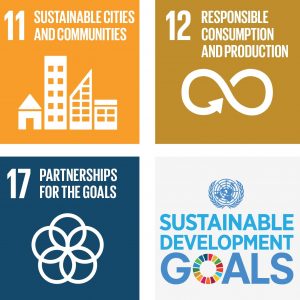Applying Carbon Standards To Sustainable Development Goals
Carbon standards provide a science-based way of establishing the climate impact of any given carbon offset project, and now standards providers are bringing that same rigor to the Sustainable Development Goals. In the coming week, we’ll explore two such efforts and how they can be applied beyond carbon markets to help investors, activists, and companies compare their progress towards sustainable development.

19 January 2018 | Last year, the United Nations sifted through 100 corporate annual reports to see how much attention big companies were paying to sustainable development. It found that 82 of them at least mentioned sustainable development in their 2016 annual reports, and 24 of them explicitly mentioned the United Nations Sustainable Development Goals (SDGs), which are a list of 17 sustainability criteria woven into the lending guidelines of development banks around the world.
Every country in the world signed off on the SDGs in 2015, and the Forest Trends Supply Change initiative tracks scores of companies that have pledged to uphold two of them: Goal 10 (Reducing Inequality Within and Among Countries) and Goal 15 (Protecting, Restoring, and Promoting Sustainable Use of Terrestrial Ecosystems).
The 17 SDGs are broken down into 169 specific targets and more than 300 indicators of success. Now leading carbon standards are bringing more rigor and comparability to bear, and next week we’ll take a look at two of them and how they can be used to measure both the “co-benefits” of carbon projects and the degree to which companies really are greening their supply chains.
The first standard to launch was the Gold Standard for the Global Goals, which launched last July after more than a year of public consultation. This week, Gold Standard launched a new Gender Equality Framework within that standard to accelerate and track progress toward SDG 5 (Gender Equality).
Last week, the Verified Carbon Standard opened its emerging standard up for public comment. Dubbed the Sustainable Development Verified Impact Standard (SD VISta), the public comment period runs through March 4, and you can provide comments at SD VISta Project Requirements Consultation.
Next week, we’ll post two stories: one a deep dive into SD VISta and the public consultation period, and another examining Gold Standard’s experience since launching, with a deep dive into its new framework for gender issues.
If you’re new to the Sustainable Development Goals, check out Episode 5 of the Bionic Planet podcast, which is available at Bionic-Planet.com, as well as on iTunes, TuneIn, Stitcher, and wherever you access podcasts. You can also listen here:

Please see our Reprint Guidelines for details on republishing our articles.

